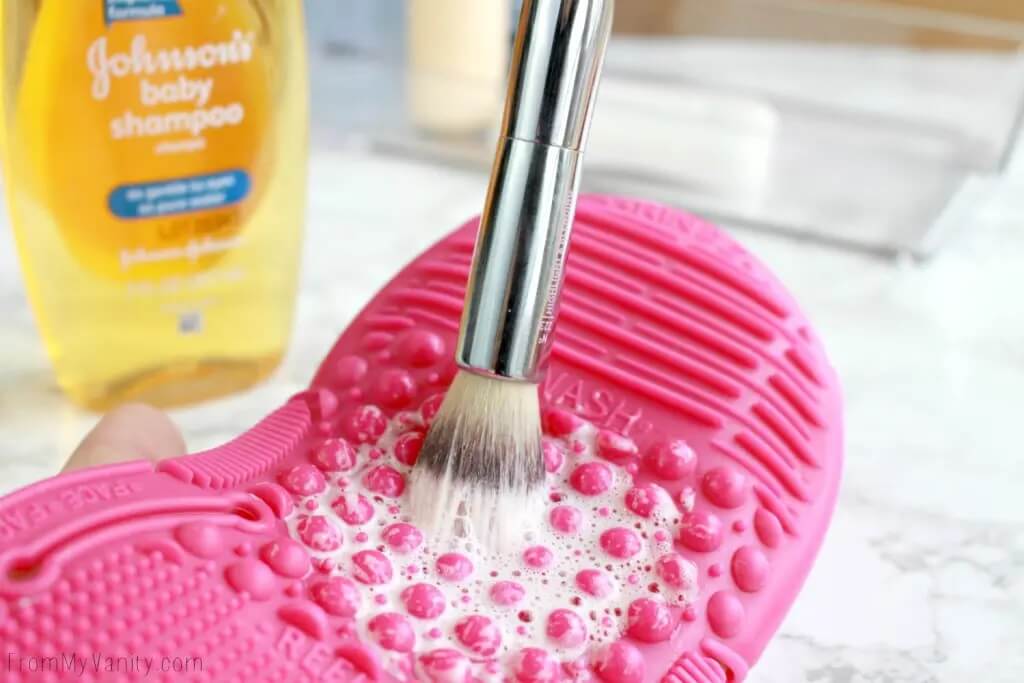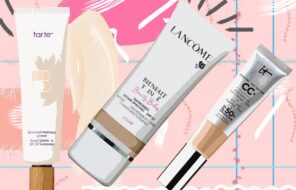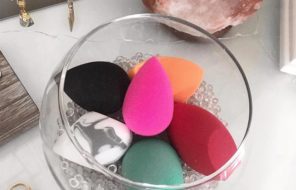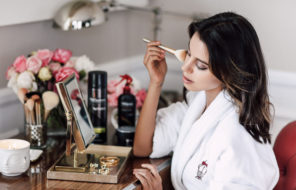When was the last time you cleaned your makeup brushes and makeup tools? Chances are, it’s been a while. (And if you tell us it was this week, we applaud you!)
In this article, we’ll explain why you need to clean your makeup tools, how often you should clean your makeup brushes, and the best way to clean them so you can feel confident that you’ve removed any product buildup to extend the life of your brushes.
Why clean your makeup brushes?
It’s important to clean your makeup brushes regularly to remove the residual makeup product that stays there after applying it. Keeping those brushes clean also helps remove dirt, oil, bacteria, pollution, and all kinds of other nasties that you don’t want to apply to your face.
Not only can dirty brushes cause rashes and clog pores, which could lead to breakouts, but contaminated cosmetics and the tools you use to apply them can lead to a fungal or staph infection, a very serious health concern.
How often to clean your makeup brushes
Ideally, you should wash your brushes every seven to 10 days to kill any lingering bacteria and keep your skin healthy, according to the American Academy of Dermatology Association (ADA).
You could clean your brushes daily with a brush cleaning product, particularly if you’re switching up makeup shades and using the same brush to create the perfect smoky eye or layer on bronzer, contour, and blush.
One way to dry clean an eyeshadow brush and remove pigment quickly is to use a sponge like this True Decor Makeup Brush Cleaner that removes the product from the brush so you can swipe on a new color or have a clean one ready for your next application.
It can be hard to remember to clean them — you probably aren’t thinking about it while getting ready in the morning or touching up your makeup later in the day. Set a weekly reminder in your calendar to dedicate a few minutes to taking care of your brushes. Maybe it’s after you throw your laundry in the wash each week or when you’re doing another household chore so you have time to allow them to dry, ideally overnight.
How to clean makeup brushes
Now that you know how often you should be cleaning makeup brushes, here are tips on how to clean them effectively to remove makeup, dirt, and bacteria while preserving the bristles. You can use specific cleansing products to help with the process, oftentimes speeding it up.
Here’s how to clean makeup brushes using cleansers:
- Place all of your brushes on a counter.
- Spray each brush, one at a time, with cleansing solutions, like Clinique’s Makeup Brush Cleanser.
- Wipe the brush on a paper towel or cotton pad.
- Ideally, give the makeup brush time to dry. If you need to use it immediately because you’re applying a new color with that brush, ensure it’s completely dry before applying makeup.
Here are some useful cleaning products for makeup brushes:
- Sephora collection Color Switch by Mona Vera Brush Cleaner: This makeup-removing sponge allows you to switch makeup colors without changing brushes. Swipe the brush over the dry sponge until you’ve removed the color.
- E.l.f. Solid Makeup Brush and Sponge Cleaner: This travel-friendly tin contains a charcoal-based cleanser that helps detoxify your brushes and sponges by cleaning and removing stains from them.
- J. Cat Beauty’s Silicone Pad Brush Cleaner: Swirl soapy bristles on the textured area of the pad to remove makeup and dirt. Rinse the brush under water while sweeping over the ‘rinse’ texture until the water runs clear.
Here’s how to clean your makeup brushes using shampoo:

- Fill a bowl with warm water and squeeze a tablespoon of clarifying shampoo or gentle shampoo into the bowl. You could also use dish soap that works for degreasing to remove caked-on makeup.
- Dunk the bristles into the bowl and swirl around, but be careful not to get the rest of the makeup brush wet.
- Work up a lather in your hands with shampoo if the makeup brush is particularly clogged and needs a deep cleansing.
- Alternatively, you could use a brush cleansing mat like this one from Sigma Spa to swirl the soapy brush against your sink.
- Rinse the brush under water, taking care to point the bristles down in the water so you don’t get the band that connects the bristles to the handle wet. You might need to gently work the bristles to clear out product buildup and shampoo.
- Keep rinsing off the makeup brush until the water runs clear.
- Once you’ve cleaned all of your brushes, lay them flat on a paper towel to dry. This allows the bristles to maintain their shape without getting the glue wet that connects them to the handle.
Once your brushes are clean, put them back in a zippered makeup bag. Ideally, when you’re done using makeup tools, you should store them in a bag that closes completely with other clean tools to minimize dirt and bacteria that could lurk on the bristles. We like the GOLIKEE Silicone Travel Makeup Brush Holder or a simple TSA-approved Transparent Weatherproof Clear Case Makeup Bag for travel.
How to clean makeup sponges
Makeup sponges and beauty blenders can also be breeding grounds for bacteria and dirt. You should also clean them regularly to keep your makeup tools — and your face — ultra-clean. Here’s how to clean this makeup tool:
- Wet the beauty blender or makeup sponge.
- Apply soap like those mentioned above for makeup brushes, or use Beauty Blender’s BlenderCleanser Solid product to work up a lather.
- Rinse the sponge thoroughly, gently squeezing it until the water runs clear.
- Roll the sponge or beauty blender on a dry towel and let it air dry.
Taking care of your skin means maintaining and cleaning your makeup tools on a weekly basis. If you have time to spray them with makeup cleanser each time after using them and give them a little TLC throughout the week, that can help reduce buildup and bacteria that could wreak havoc on your skin.
The better you care for your makeup tools and brushes, the longer they’ll last. Good quality makeup brushes should last up to 10 years — but only if you clean them regularly and properly.





